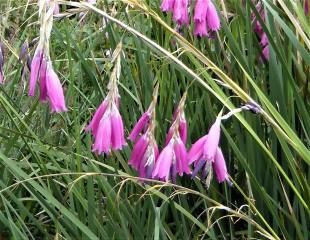
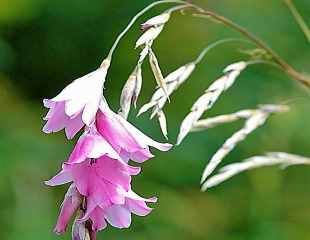

How To Grow Dierama Angel's Fishing Rod
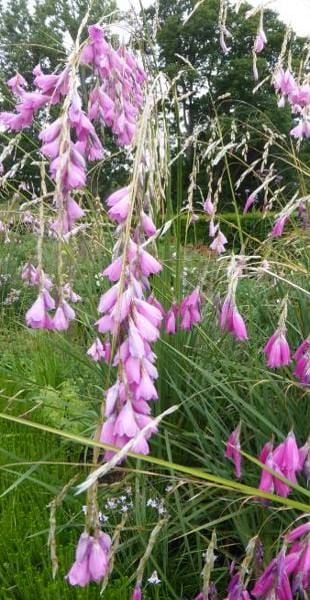
Dierama is a herbaceous perennial with delicate arching plumes of bell-shaped flowers, which is also known as Angel's Fishing Rod. It is a fabulous, unusual summer flowering plant which, because of its uniqueness, makes a great addition to the garden.
The most commonly sold variety is Dierama pulcherrimum, which is the pale pink variety illustrated left. There is also an attractive dark red variety called D. pulcherrimum 'Blackbird'., illustrated top right.
Companion plants for Angel's Fishing Rods include grasses, as in the image below, where Dierama is combined with Stipa tenuissima, a soft fluffy grass. It also teams up well with Agapanthus and looks fabulous alongside a pond or water dangling, or angling, over the side. When growing Dierama near a pond or water, it is important to ensure the ground is well drained, as Dierama does not grow well in wet conditions. There is also a white variety, D. argyreum which is hardy to -10.
Initially Angel's Fishing Rod can be slow growing and take 1-2 years to get established.

Once it gets going, it is a green wheelbarrow plant needing very little time or attention. Dierama flowers mid summer onward from around July to the end of September The only maintenance required is to remove old foliage in early spring.
Where and how to plant Dierama The Angels Fishing Rod
To grow Angel's Fishing Rod plant corms in the spring, about 5-7cms deep, in good, humus rich, well-drained soil, and provide shelter. When planting corms, water well initially to ensure the corms are well hydrated and the plant does not dry out. Plant the pot-grown plants at soil level in a border.
Varieties vary in frost hardiness, most including Dierama pulcherrimum are H4 hardy, which means Dierama will grow best in a sheltered spot and in cold areas, with winter protection such as a mulch .
Dierma grows best in full sun, and is fussy, needing a sheltered spot, although it will grow in any soil, clay, sandy acid or alkaline. Other H4 varieties are D. dracomontanum, D. 'Miranda' and D. 'Titania' It is important that the ground is well drained, Angel's fishing rod will not thrive in wet or waterlogged soil.
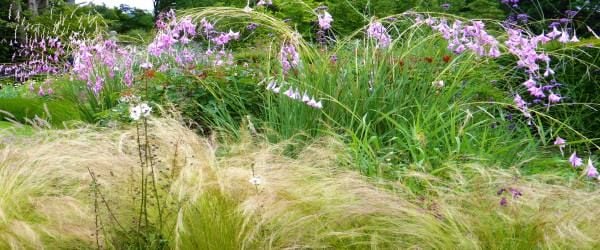
Dierama can be propagated by division. Lift an established clump in the spring and cut into large sections and replant. The disturbance may interrupt flowering. Unless absolutely necessary, it is advisable to refrain from propagating and dividing Angel's Fishing Rod, considering that the most difficult part of growing them is getting them established and flowering.
If Dierama is not the plant you are looking for, check out other Summer flowering plants, Summer planting combinations and ornamental and garden grasses for more ideas.
I took this image of Dierama flowering with grasses and Agapanthus at Bodnant garden in Wales which is a marvellous garden to visit with many areas to see and enjoy, highly recommended for a day out.
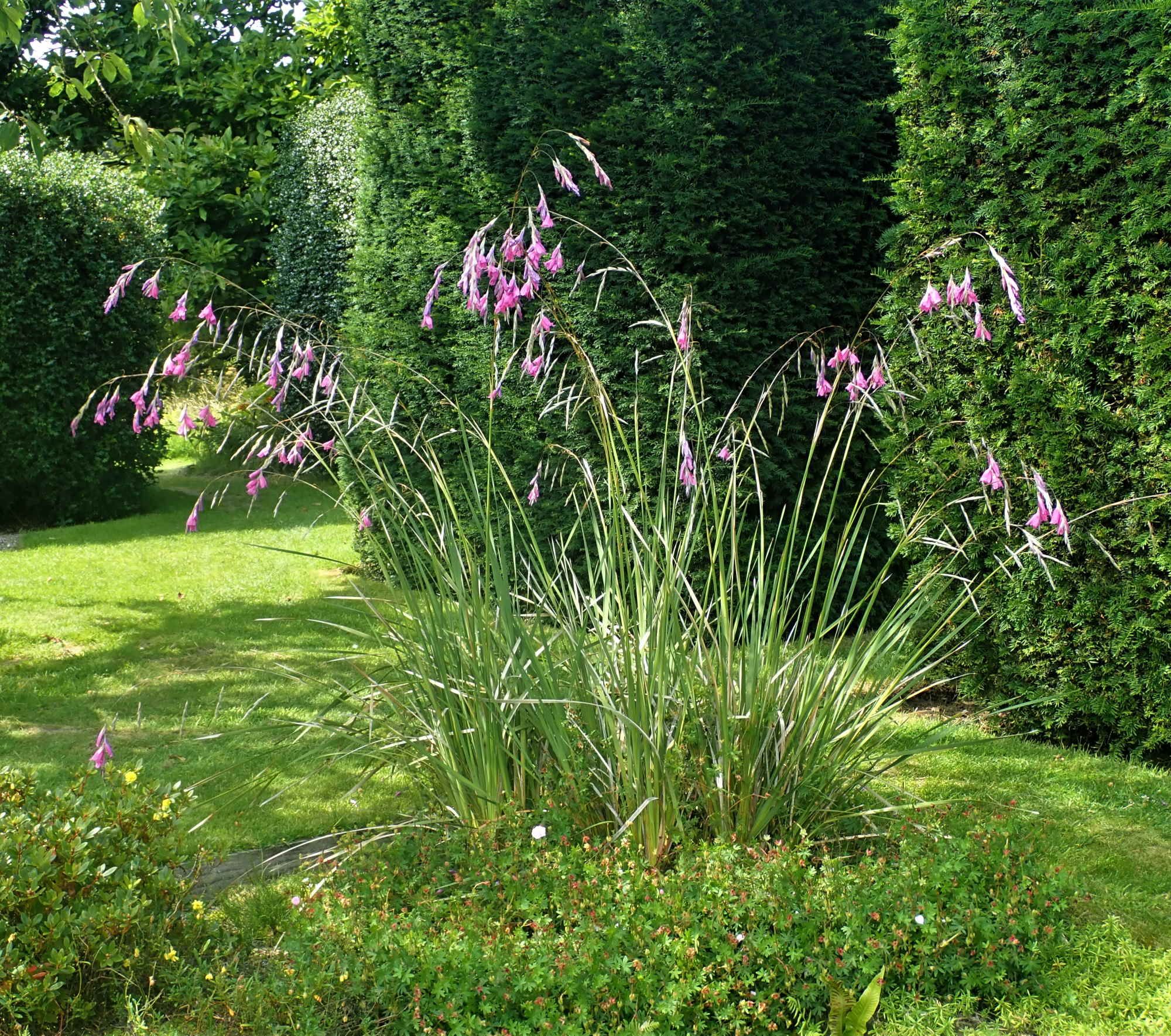
Dierama also looks good, as a clump growing on its own to highlight the grace and beauty of the arching flowers. This is a mature plant which I photographed at Arley Hall, famous for its herbaceous borders.
Dierama planted as a specimen plant, as in this image, also shows off its graceful dance in the breeze.
If you are looking for movement in the border, Dierama is good, as are grasses and the tall, elegant Thalictrums.
